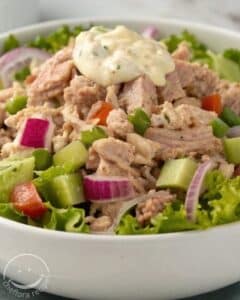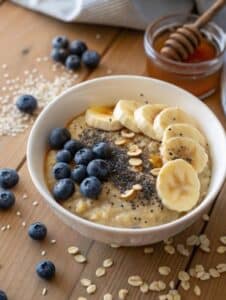Post Disclaimer
Disclaimer: This content is for educational purposes only, not medical advice. Always consult with a doctor before making significant changes to your diet, especially if you have pre-existing health conditions.

Let me tell you, scrambled eggs saved my sanity more times than I can count. I’m Lora busy mom, accidental breakfast queen, and founder of cheflorarecipes.com. I used to dread mornings. Between packing school lunches and chasing socks, breakfast always felt rushed… until scrambled eggs became my secret weapon.
They’re fast. They’re flexible. And when done right, they’re downright heavenly.
In this article, I’ll walk you through everything you need to know about scrambled eggs from achieving that buttery fluff to fixing those rubbery mistakes we’ve all made. I’ll also spill some chef-approved secrets (hello, Mary Berry fans!) and healthy twists for everyday cooking. Whether you’re cooking scrambled eggs for one person or making a big batch, this guide has you covered.
We’ll even answer common breakfast questions like: What’s the best egg to use? Can I microwave scrambled eggs? And how do I get that cloud-like texture without cream?
So, grab a fork (and maybe some toast), and let’s dive in.
Table of Contents
Key Takeaways: What You Need to Know About Scrambled Eggs
- Scrambled eggs are quick, nutritious, and beginner-friendly.
- The best scrambled eggs are creamy, fluffy, and cooked low and slow.
- Avoid overcooking or stirring too much these are common mistakes.
- Add-ins like milk or cheese can help or hurt, depending on timing.
- Celebrity chefs swear by butter, patience, and low heat.
- Microwave scrambled eggs can work in a pinch with the right technique.
Why Scrambled Eggs Deserve a Spot in Your Morning Routine
What Makes Scrambled Eggs So Popular?
Scrambled eggs are beloved for their simplicity, speed, and versatility. You can make them in five minutes, customize them endlessly, and they pair perfectly with just about anything from avocado toast to sweet French toast.
They’re also a great starter recipe for beginners. No need for fancy gadgets just a pan, a fork, and a little heat. Whether you’re making scrambled eggs for one person or brunch for a crowd, the process scales easily.
As a mom, they’ve saved my mornings more times than I can count. A warm plate of scrambled eggs with a slice of bagel and cream cheese is often my peace offering to a cranky toddler.
Are Scrambled Eggs Healthy?
Yes scrambled eggs are packed with protein, vitamins, and healthy fats. One large egg offers about 6 grams of high-quality protein and essential nutrients like B12, selenium, and choline. That’s brain food for you and your little ones.
The key is in how you cook them. Frying in butter and adding cheese? Delicious, but heavier. Want something lighter? Cook with olive oil or spray, and skip the cheese. You can also pair them with veggies or serve alongside a light veggie omelette roll for balance.
Bonus: They’re naturally gluten-free and keto-friendly, making them a great base for many dietary needs.
How to Avoid Common Scrambled Egg Mistakes
What Are the Most Common Mistakes People Make with Scrambled Eggs?
Overcooking, using high heat, and over-stirring are the biggest scrambled egg mistakes. These missteps can turn your fluffy dream into a rubbery nightmare something I learned the hard way during my early mom-on-a-mission breakfast days.
Let’s break down the usual culprits:
| Mistake | Why It Ruins Your Eggs |
|---|---|
| Cooking on high heat | Leads to dry, rubbery texture |
| Stirring constantly | Breaks curds down too much, eggs lose structure |
| Adding milk too early | Prevents eggs from setting properly |
| Using metal utensils | Scratches non-stick pans and breaks eggs into mush |
| Salting before cooking | Can make eggs watery if done too soon |
A simple rule? Low and slow wins the race. Cooking over medium-low heat gives eggs time to gently set without drying out. And resist the urge to stir non-stop let those curds form!
How Do I Get Scrambled Eggs Right Every Time?
Start with fresh eggs, beat them well, and cook gently. These three steps will transform your eggs from “meh” to marvelous. Trust me once I slowed down my technique, my kids stopped asking for cereal instead.
Here’s my go-to scrambled egg method:
- Crack 2–4 eggs into a bowl and beat them with a fork or whisk until fully combined—no streaks.
- Add a pinch of salt and pepper just before cooking. If you’re using cheese or add-ins, keep the seasoning light.
- Heat a non-stick skillet over low to medium-low heat. Add 1 tsp of butter or oil.
- Pour in eggs and let them sit for a few seconds.
- Stir gently with a silicone spatula, pushing eggs from edges inward.
- Remove from heat when they’re just set they’ll continue cooking from residual heat.
If you want a quick twist, try microwave eggs. Yes, scrambled eggs in the microwave can work! Use a ceramic mug, whisk in eggs and milk, and microwave in 30-second bursts, stirring in between, until fluffy.
Want chef-level eggs? Mary Berry’s tip from her scrambled egg recipe is to finish with a knob of butter off the heat for richness without overcooking.
Perfect Scrambled Eggs 3 Ways That Never Fail
What Tips Do Celebrity Chefs Use for the Best Scrambled Eggs?
Top chefs agree: low heat, patience, and quality ingredients are non-negotiable for perfect scrambled eggs. But each chef brings their own twist. I’ve tested a bunch (even while wearing pajamas at 6 a.m. you’re welcome), and here’s what really works.
Here are 3 chef-approved scrambled egg methods that never let me down:
| Method | Heat Level | Add-ins | Chef Tip |
|---|---|---|---|
| Classic French | Low | Butter, cream | Stir constantly, remove while slightly wet |
| Soft-Curd Style | Medium-low | None or a touch of oil | Let curds form, stir gently, don’t rush |
| Creamy Scramble | Low | Butter + cream cheese | Stir occasionally, finish with cheese for melt-in texture |
Gordon Ramsay’s secret? Start eggs in a cold pan with butter, move it on and off the heat, and stir with a spatula. He also adds crème fraîche at the end to stop cooking and add creaminess.
Ina Garten recommends slow cooking with a splash of half-and-half for richness and always serving eggs on a warm plate. (Trust me, it really keeps them from firming up too fast!)
These tips helped me upgrade my rushed mom-style scramble into something my husband now calls “fancy brunch eggs.”
What’s the Ideal Texture for Scrambled Eggs?
The best scrambled eggs should be soft, silky, and slightly custardy not dry, rubbery, or overly firm. Think soft curds that gently hold together, gliding across the fork with a little buttery sheen.
Here’s how to get that dreamy texture:
- Use fresh eggs — older ones break down too quickly.
- Beat thoroughly — no whites showing.
- Don’t overcook — remove from heat just before they’re fully set.
- Add fat at the end — like a dab of butter or soft cheese for creaminess.
I love pairing creamy scrambled eggs with smoked salmon and avocado eggs royale for a special weekend brunch or scooping them over toasted bagels for a cozy weekday treat.
Choosing the Right Eggs for the Best Scramble
What Type of Eggs Should I Use for the Best Results?
Pasture-raised, organic eggs are ideal for scrambled eggs because of their rich yolks and fresher flavor. But here’s the truth: even regular grocery store eggs can work beautifully if you cook them right.
Here’s a quick breakdown to help you choose:
| Type of Egg | Flavor | Texture | Price | Worth It? |
|---|---|---|---|---|
| Conventional | Mild | Slightly thinner whites | $ | ✅ Everyday use |
| Cage-Free | Slightly richer | Moderate | $$ | ✅ Good upgrade |
| Organic | More flavorful | Creamier yolks | $$$ | ✅ Great balance |
| Pasture-Raised | Deep flavor, orange yolks | Velvety | $$$$ | ✅ Best for special dishes |
I personally use organic or cage-free eggs for everyday cooking. When I’m making something like eggs benedict or a fancier breakfast like sun-dried tomato and feta stuffed French toast, I reach for pasture-raised eggs they’re like little golden orbs of flavor.
Do Brown Eggs Make Better Scrambled Eggs Than White?
Nope shell color doesn’t impact taste or quality. Brown eggs and white eggs are nutritionally identical. The color simply depends on the breed of the hen.
The real difference in flavor comes from the chicken’s diet and how it’s raised not the eggshell. So instead of focusing on shell color, pay attention to:
- Sell-by date (fresher = better)
- Yolk color (darker = more nutrient-rich feed)
- Labeling (pasture-raised > cage-free > conventional)
You’ll know you’ve picked the right eggs when you crack them and see a tall yolk with thick whites. That’s egg gold.
Real Testimonial: Scrambled Eggs That Changed Breakfast
“I used to make scrambled eggs that tasted like school cafeteria food. Dry, bland, just… sad. But after following Lora’s tips low heat, butter at the end, and good eggs my breakfast game is on fire. My teens actually ask for eggs now. Total game-changer.”
Tina M., Portland, OR
How to Make Scrambled Eggs Healthier (and Still Delicious)
How Can I Make Scrambled Eggs Healthier?
You can make scrambled eggs healthier by adjusting your cooking fat, using fresh add-ins, and watching portion size. The trick is to balance flavor and nutrition without turning breakfast into a bland chore.
Here are my favorite ways to lighten up scrambled eggs:
- Use olive oil or avocado oil instead of butter
- Skip cream and cheese, or use smaller amounts at the end
- Load in veggies like spinach, mushrooms, or diced peppers
- Cook slowly, so you don’t need extra fat for texture
- Serve with fiber-rich sides like avocado toast or whole grain bread
If you’re watching cholesterol, use 2 whole eggs + 2 egg whites to reduce saturated fat but still keep that rich yolk flavor. It’s my go-to combo when I want something lighter without compromising on creaminess.
I also love folding in cooked veggies from the night before it reduces food waste and adds bulk without extra calories.
What Ingredients Can I Add to Boost Nutrition?
Add-ins can transform scrambled eggs into a powerhouse of nutrients. Just be mindful of what you’re adding and when. For instance:
| Ingredient | Benefit | When to Add |
|---|---|---|
| Spinach or kale | Iron, fiber, vitamins A & C | Sauté in pan before eggs |
| Mushrooms | Antioxidants, umami | Cook first, then add eggs |
| Chopped tomatoes | Vitamin C, hydration | Add right after eggs start setting |
| Cottage cheese | Protein, calcium | Stir in at the end |
| Ground flax or chia | Fiber, omega-3s | Mix into beaten eggs before cooking |
One of my favorite quick-and-healthy recipes is a veggie-packed scramble served with a slice of chocolate chip pancake for the kids. Everyone wins.
Pro tip: Avoid pre-shredded cheeses and flavored oils they often come with preservatives, fillers, and extra sodium.
Best Ways to Cook Scrambled Eggs (No Matter Your Schedule)

What Are the Best Ways to Cook Scrambled Eggs?
The stovetop remains the gold standard for scrambled eggs, but if you’re short on time or don’t want to wash another pan, other methods absolutely work. The key is choosing the right method for your needs whether you want fast, fancy, or somewhere in between.
Here are the 4 best ways to cook scrambled eggs:
| Method | Best For | Pros | Cons |
|---|---|---|---|
| Stovetop (nonstick skillet) | Everyday eggs | Creamiest texture, total control | Needs attention |
| Microwave | Busy mornings | Super fast, one dish to clean | Can overcook easily |
| Double boiler | Ultra-creamy eggs | Luxurious, no crusty edges | Takes time |
| Oven-baked | Feeding a crowd | Hands-off, batch-friendly | Less fluffy |
Each has a place in my kitchen. On school days? Microwave. Brunch weekends? Stovetop or oven all the way.
Microwave Scrambled Eggs Tip: Use a ceramic mug, beat 2 eggs with a splash of milk, microwave for 30 seconds, stir, and repeat in short bursts until just set. Season after cooking.

Perfect Creamy Scrambled Eggs
Equipment
- non-stick skillet
- fork or whisk
- mixing bowl
- silicone spatula
- plate
Ingredients
- 2 large eggs
- 1 tsp unsalted butter or olive oil
- 1 pinch salt, to taste
- 1 pinch black pepper, to taste
- 1 tbsp optional: milk, cream, or cheese (for creaminess)
Instructions
- Crack 2 eggs into a bowl and beat them with a fork or whisk until fully combined with no streaks.
- Add a pinch of salt and pepper just before cooking. If using cheese or milk, mix it in lightly.
- Heat a non-stick skillet over low to medium-low heat. Melt 1 tsp butter or warm olive oil.
- Pour in the beaten eggs and let them sit for a few seconds before stirring.
- Stir gently with a silicone spatula, pushing eggs from edges toward the center to form soft curds.
- Remove from heat while the eggs are still slightly glossy—they will continue to cook with residual heat.
- Serve immediately on a warm plate. Optionally top with herbs, cheese, or a dab of butter.
Notes
How Can I Achieve a Fluffy and Buttery Scramble?
To get fluffy scrambled eggs, cook low and slow, and use gentle folding instead of frantic stirring. And don’t be afraid of a little fat it helps eggs stay soft and luxurious.
Here’s my tried-and-true method for fluffy eggs that wow every time:
- Beat eggs thoroughly until foamy incorporating air is key.
- Add 1 tsp of butter or ghee to a nonstick skillet and melt on low heat.
- Pour in eggs, wait a few seconds until edges set.
- Use a silicone spatula to gently push eggs from edges inward. Pause between folds.
- Remove from heat early, while still slightly glossy. They’ll finish on the plate.
- Optional: Stir in soft cheese (like goat cheese or cream cheese) at the end for extra creamy texture.
Want a flavor boost? Finish your eggs with chopped herbs, a dusting of paprika, or a drizzle of infused olive oil.
I love serving these fluffy beauties with something hearty like french toast or pairing them with eggs benedict for a show-stopping brunch.

Scrambled Eggs Done Right — Final Tips, FAQs & Real-Life Wins
What Are the Secrets to Achieving the Perfect Scrambled Egg?
Perfect scrambled eggs aren’t about luck they’re about little habits that add up. Whether you’re cooking for yourself or the whole family, these rules apply:
- Start with fresh, high-quality eggs.
Fresher eggs = richer flavor and better texture. - Beat well.
Fully blended eggs cook more evenly and fluff better. - Cook low and slow.
Medium-low heat is your best friend. - Don’t overmix.
Let those gorgeous curds form. - Pull from heat early.
Eggs keep cooking after you plate them. - Add flavor thoughtfully.
Herbs, cheeses, and seasonings work best after eggs are mostly cooked. - Serve immediately.
Scrambled eggs don’t hold eat them while they’re silky!
These tips helped me go from overcooked “meh” eggs to creamy, dreamy ones that even my picky teen devours. Paired with a slice of avocado toast or a side of smoked salmon and eggs royale, they’re next-level satisfying.
FAQs
What are the health benefits of scrambled eggs?
Scrambled eggs are rich in protein, healthy fats, and vitamins like B12 and choline. They support brain health, muscle recovery, and help keep you full longer.
How can I make scrambled eggs healthier?
Use less butter, skip the cheese, and add veggies like spinach or mushrooms. Cooking with olive oil and using egg whites or a mix of whole eggs and whites also cuts fat.
What are the common mistakes people make with scrambled eggs?
High heat, overcooking, and over-stirring are the top errors. They lead to dry, rubbery eggs instead of soft, creamy ones.
What tips do celebrity chefs have for making the best scrambled eggs?
Low heat, butter or cream added at the end, and gentle folding are key. Gordon Ramsay, Mary Berry, and Ina Garten all agree: patience matters.
What is the ideal texture for scrambled eggs?
Soft, slightly glossy, and gently curded. They should glide across your fork and feel almost custardy—not stiff or dry.
What type of eggs should I use for the best results?
Pasture-raised or organic eggs offer richer flavor and better texture. But any fresh eggs will work if you use the right technique.
How can I achieve a fluffy and buttery scramble?
Beat the eggs well, cook low and slow, and finish with butter or cheese. Let the curds form, and never over-stir.
What are the best ways to cook scrambled eggs?
Stovetop for control, microwave for speed, oven for crowds. Each method works with the right timing and tools.
What are the secrets to achieving a perfect scrambled egg?
Use fresh eggs, cook low and slow, stir gently, and stop early. Bonus tip: finish with a touch of butter for shine and richness.
Final Thoughts
Scrambled eggs might seem simple, but getting them just right is an art and now you’ve got all the tools. Whether you’re feeding kids before school or prepping a cozy weekend breakfast, these tips will serve you every time.
From one busy mom to another don’t stress about perfection. Eggs are forgiving. What matters most is that you feel confident, inspired, and nourished. You’ve got this.




